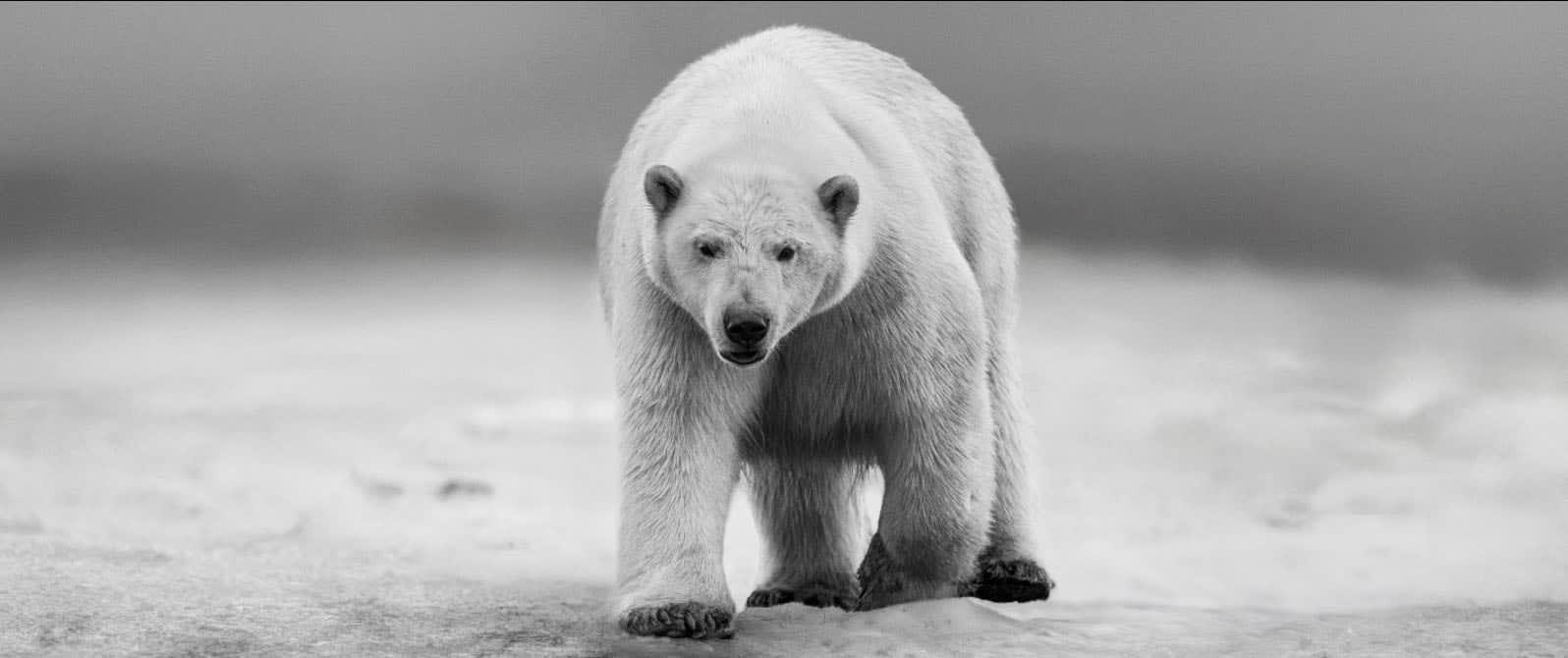David Yarrow Scottish, b. 1966
No Time To Kill, 2025
Archival Pigment Print
58 x 118 inches
Edition of 12 plus 3 artist's proofs
Signed, editioned and dated on bottom recto
NO TIME TO KILL 70 DEGREES NORTH - 2025 Almost all my decent work with polar bears has been taken in flat or low light. When we travel to the...
NO TIME TO KILL
70 DEGREES NORTH - 2025
Almost all my decent work with polar bears has been taken in flat or low light. When we travel to the extreme locations where bear encounters are likely, there is an acceptance that we must simply work with whatever weather we are given; it’s not as if we are there to do anything else. These locations tend to be light on optionality and patience, and a few downloaded Paramount TV shows are a necessity. These assignments are not for people who get restless or need comfort.
Poor light pushes camera capability to the edge and ultimately reduces the margin of error in critical moments. This moment was one of those, as the polar bear was coming right towards me and carried a proper menace.
Polar bears “pop” in an image more than any other mammal I know because of their white coats. If those white coats are then highlighted by sunlight, it can all be a bit much and visually it often does not work.
This photograph, which I took recently on the Alaskan North Slope, works, not only because of the murky weather, but also because the bear’s head position serves to highlight the bulk that comes behind it. This is a big boy and this was the very last frame I took before I had to move. A ground up camera position is so important, but with that goes a need to always put safety first.
I was up in the arctic for a few days and took fewer than two dozen photographs. That’s the way it is up there. Less is more.
70 DEGREES NORTH - 2025
Almost all my decent work with polar bears has been taken in flat or low light. When we travel to the extreme locations where bear encounters are likely, there is an acceptance that we must simply work with whatever weather we are given; it’s not as if we are there to do anything else. These locations tend to be light on optionality and patience, and a few downloaded Paramount TV shows are a necessity. These assignments are not for people who get restless or need comfort.
Poor light pushes camera capability to the edge and ultimately reduces the margin of error in critical moments. This moment was one of those, as the polar bear was coming right towards me and carried a proper menace.
Polar bears “pop” in an image more than any other mammal I know because of their white coats. If those white coats are then highlighted by sunlight, it can all be a bit much and visually it often does not work.
This photograph, which I took recently on the Alaskan North Slope, works, not only because of the murky weather, but also because the bear’s head position serves to highlight the bulk that comes behind it. This is a big boy and this was the very last frame I took before I had to move. A ground up camera position is so important, but with that goes a need to always put safety first.
I was up in the arctic for a few days and took fewer than two dozen photographs. That’s the way it is up there. Less is more.
30
of
30

